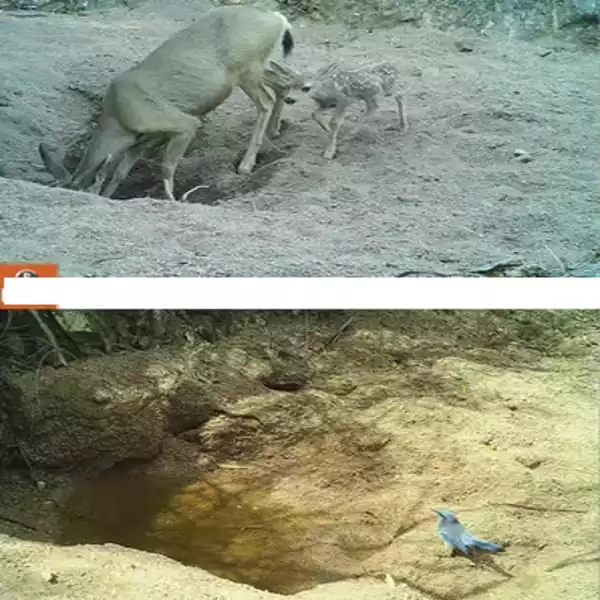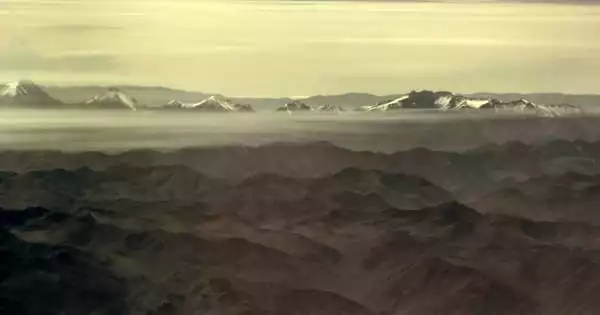Almost all horses paw at the ground at some point, when a horse participates in pawing behavior repeatedly and for extended periods of time, it develops into a stereotypie. When a horse digs or paws at the floor or ground with its front feet on a regular basis, the activity is usually caused by boredom, annoyance, or impatience. Some horses become so engrossed in their pawing that they appear to lose touch with their surroundings. When pawing reaches this level, it has most certainly become an ingrained habit that will be difficult to eradicate.
The cycles of desert life are driven by water, yet animals aren’t always powerless against the whims of the weather. Wild donkeys and horses in the American Southwest frequently burrow through dusty silt to find cool, crystal clear groundwater to quench their thirst. According to new studies, this equid creativity has far-reaching ecological benefits.
Researchers explain in the issue of Science that equid wells can operate as a desert oasis, providing a substantial source of water during dry periods that benefit a variety of desert species and keystone trees.
Wild donkeys and horses, which were introduced to North America in the last 500 years or so, are frequently portrayed as villains in Westerns. These species have the ability to trample native plants, degrade creek beds, and outcompete native wildlife. However, when Erick Lundgren, a field ecologist at Aarhus University in Denmark, first noticed wild donkeys digging wells in 2014, he wondered if these holes could assist ecosystems in the same way that elephant-built water holes can maintain a community in the African savanna.
Wild donkeys and horses, which were introduced to North America in the last 500 years or so, are frequently portrayed as villains in Westerns. These species have the ability to trample native plants, degrade creek beds, and outcompete native wildlife.
Erick Lundgren
“Because of the way we value [feral] horses and donkeys, the orthodoxy tends to focus on how they harm ecosystems,” he says. “We wanted to see whether these holes provided a resource when water is scarce.”
First, Lundgren and his colleagues needed to determine whether these perforations actually increased the amount of accessible water. They measured the surface area of water in wells and groundwater-fed streams at four sites in Arizona’s the Sonoran Desert across three summers, from 2015 to 2018.
Water availability varied greatly between sites, but equid wells generally increased accessible water, particularly as temperatures rose. When the creek dried up, wells were the only supply of drinking water at one location. Wells produced up to 74% of the available surface water elsewhere. Wells also reduced the average distance between water sources by 843 meters, making this crucial resource more accessible and lowering tensions that might arise among users at isolated water holes, according to Lundgren.
Once wells were dug, other animals came.
Researchers set up cameras at five sites in the Sonoran and Mojave deserts, staking outwells, riverbanks, and dry spots. They documented 57 vertebrate species, from migratory songbirds to mountain lions, slurping at the wells, which is about equal to the number of species seen at streams and 64 percent higher than in dry spots.
“We even caught a black bear drinking from a well,” says Lundgren, who also takes swigs from the wells from time to time. “The water is quite cool, and cleaner than other sources.”

Wells can also be used as nurseries for cottonwood seedlings, which require damp, open conditions to develop. These fast-growing seedlings are unable to break through the vegetation-encrusted riverbanks and must instead rely on floods for their initial licks of water. However, researchers discovered seedlings growing in equid holes at one site. Many survived the summer, growing to heights of up to 2 meters. According to the researchers, equid wells may provide an important ecological service for these iconic tree species in locations where dams restrict floods.
Clive Jones, an ecologist at the Cary Institute of Ecosystem Studies in Millbrook, N.Y., who was not involved in the study, said the study “clearly illustrates that equids may transform these ecosystems in ways that can benefit other species.” Such hydrological engineering is not uncommon; beavers, for example, have an extraordinary ability to construct ecosystems. It remains to be seen whether equid wells play a similarly important function, according to Jones. “More data is needed to determine the precise importance of wells in the functioning of these ecosystems.”
Though the benefits of wells are clear in this study, it’s too early to conclude that feral donkeys and horses are good for ecosystems, notes Jeffrey Beck, a restoration ecologist at the University of Wyoming in Laramie.
“There’s a lot of data detailing the negative consequences these creatures can have on drylands all around the world,” Beck says. He’s researched how wild horses push antelope-like pronghorn away from watering spots in Wyoming’s Red Desert, for example. Furthermore, “the benefits [the equids] display in this study may be confined to this location,” he notes, because surface water in other areas may not be as easily available by digging.
Nonetheless, the researchers hope that their work will help to disprove the concept that imported species are inherently harmful to ecosystems. According to study author Arian Wallach, an ecologist at the University of Technology, Sydney, wild equids “are being murdered by the hundreds of thousands in the name of purifying nature” in some locations. To her, this study shows “donkeys [and horses] are part of nature too,” and that eradication effort might ripple throughout an ecosystem in unforeseen and unfortunate ways.
















